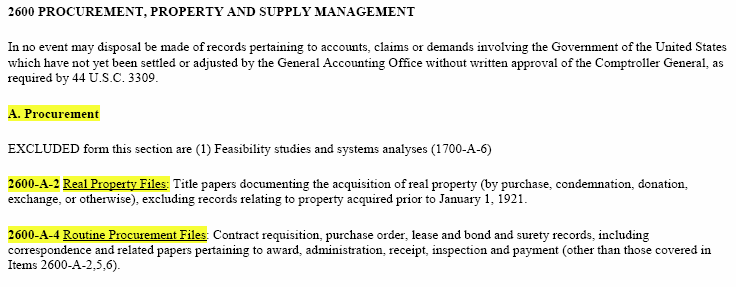|
|
Determining Records SeriesThe first step you should take in order to discover what action is required for a record is to determine the record's series. Determining the series means identifying the group of like records to which it belongs. A records series consists of documents or file units arranged according to a filing system or kept together because they relate to a particular subject or function or result from the same activity. NIH Manual Chapter 1743, Keeping and Destroying Records contains descriptions of the NIH records series. The document is divided into sixteen sections according to record type. Section headings are designated by a four-digit number.
Within each section are descriptions of specific series. For example, if you have procurement files such as purchase card receipts and reconciliations, you would go to the procurement section of 1743, which is number 2600. Entry 2600-A-4, Routine Procurement Files, deals with the receipt and payment of purchases.
Once you have identified the series, 1743 provides specific instructions as to how long records may be kept and what must be done with them after the specified period. Following these instructions is known as implementing the disposition. Some records may not be described in 1743. If not, check the General Records Schedule (GRS) of the National Archives and Records Administration (NARA). The GRS provides for the disposition of records generally used in all government offices, such as general administration records or personnel records. Disposition is the final action to be taken on official records. If the record is not listed in either publication, then NARA has not approved its disposition. In that case, you must fill out a form to request a disposition from NARA. This process is known as scheduling records. Until a record is scheduled it is considered an unscheduled record.
|
 |
National Institutes of Health
|

|
 Section of Manual 1743
Section of Manual 1743